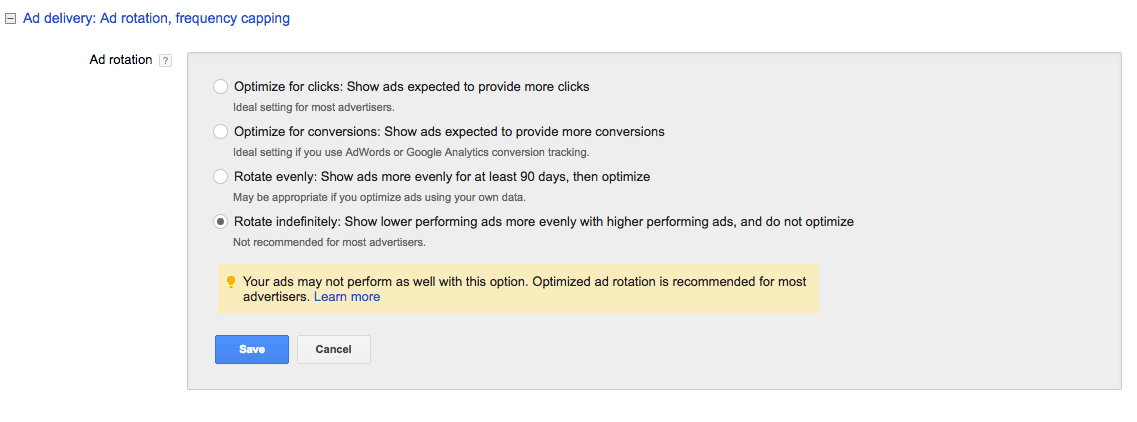Last year, as 2015 drew to a close, we posted a wish list for Google. And this year, we’ve decided to continue the practice—not because we got everything we wished for, but because we’ve compiled a whole new list of wishes!
Before we start, let me state—for the record—that we know we have it pretty good with Google. We’re the first to say AdWords is a solid tool. And the good folks at Google are usually pretty responsive to our inquiries.
But at the same time, that doesn’t mean there isn’t room for improvement.

Wish #1: More Color in Ads and Extensions
If this wish sounds familiar, it’s because it made last year’s wish list as well.
AdWords ads aren’t entirely devoid of color. Headlines are blue. URLs are green. Star ratings are orange and sitelinks are blue. This is all good. But we want more.
Entire books have been written about the importance of design and color in capturing attention and keeping consumers engaged. So could we have a bit more room to play with here? Because even with these colors, we often end up with solid blocks of text, as below:

Wish #2: Ditch Recommended Settings
As PPC pros, one thing we constantly bang our heads against are the recommended settings in AdWords. It seems that whenever you have options, AdWords makes a recommendation and cautions against other selections.
You can see this in play when selecting ad rotation options in AdWords. The first option is described as the “Ideal setting for most advertisers.” The fourth option comes with the warning “Not recommended for most advertisers.”
When we select the fourth option in spite of the warning, Google tells us “Your ads may not perform as well with this option.”
Okay, okay! We get the message.

The problem is the recommended settings work great for Google but often not great for our clients. (In the example above, the first option, “optimize for clicks,” generates revenue for Google but may not do much for clients. More clicks don’t always equal more sales.)
We see the result of these recommendations when we take over PPC accounts previously managed by internal marketing teams. Because team members aren’t deeply versed in PPC, they naturally choose the settings that Google recommends. But when we take over these accounts and choose settings that are optimized for the client, the results improve—sometimes dramatically.
In addition, these recommended settings create issues when we add new members to the Group Twenty Seven team. For example, we require all team members to get AdWords certification. But once they complete it, they have to unlearn a good chunk of it. Because, again, they’re learning things from Google’s perspective, not our tried and tested best practice methods.
In short, we’d prefer to avoid this can of worms by ditching recommendations entirely. While it might require more legwork from novice users, at least they wouldn’t be misled.
Wish #3: Keep Help Files Updated
Keeping help files up to date is no easy task. AdWords is constantly changing, and it can’t be easy to keep documentation current.
So, not infrequently, we find we can do things that, according to the help files, we shouldn’t be able to. (Which means either that help files are out of date or policy is being applied inconsistently. Or both.)
For example, the AdWords help file, under the topic of misrepresentation, tells us that we can’t use superlatives or comparatives (such as “best” and “better than”) in ads without third-party verification:

But on more than one occasion, Google has approved ads with these superlatives without third-party verification. So what gives?
Again, this results in us having to re-educate clients and new team members who have read the AdWords help files (which should be a good thing, right?). But often, practice differs from what’s written.
Wish #4: More Data Analysis Options
This is a common complaint from both professional AdWords and Google Analytics users. We’d all like more options for slicing and dicing data.
This point was driven home recently when a client screen shared a different analytics tool with me. I was blown away about how much flexibility this tool gave users to manipulate and analyze data. Basically, they can drag and drop any metric into a report. It was awesome!
It’s true that AdWords gives us the power to add a second dimension to data analysis. But why not a third and a fourth? After all, it’s not like we’re asking for new data. The data’s already there. We just want more ways to play with it.
We recognize that AdWords is trying to walk a fine line between “easy to use” for new users and “sophisticated functionality” for professional users. Which, I expect, is why we end up with things like “recommended” settings and limited data analysis.
But shouldn’t the overarching direction be more power and greater versatility? And then layer on more training and support for junior AdWords users?
What’s on your PPC wish list for 2017? Let us know below.






